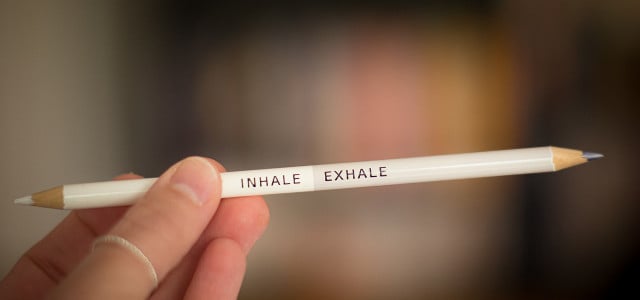
Breathing properly is often lost in everyday life. Here you can find out what is behind our breathing and the power it can give us – with specific instructions.
We breathe in and out about twenty thousand times a day. And usually without thinking too much about our breathing. We don’t notice that our breathing speeds up when we’re under stress. This is the effect of messenger substances that the body releases when it is stressed and that ensure fast, shallow breathing.
On the other hand, if we remember to breathe calmer, slower and deeper, we can alleviate stress symptoms. Breathing properly can help you to become more relaxed and relaxed in everyday life and prevent further stress.
Breathe properly: This is how breathing and the psyche are connected
Breathing connects body and psyche. According to Geo, researchers see them as a bridge between the conscious and unconscious. Most of the time we breathe automatically, i.e. unconsciously. Breathing is controlled by the autonomic nervous system. It controls all processes in the body that we cannot consciously control with our will.
The autonomic nervous system interprets our movements and feelings and adjusts breathing accordingly. When we walk faster or exercise, we breathe faster. This also applies when we are stressed because we still have a lot to do before a deadline. If we are startled, we may even stop breathing for a moment. Conversely, when we are relaxed, calm and content, or asleep, breathing slows down.
The chief physician at the lung clinic in Cologne-Merheim, Wolfram Windisch, explains on SWR that our breathing is also closely linked to the limbic system in our brain. The limbic system is the center of our emotions. For example, when we experience joy, anger, pleasure, or pain, it also affects the way we breathe.
But what makes breathing so unique is that it doesn’t necessarily have to be unconscious. It is the only vegetative function that we can also consciously control – if we only want to. We can consciously breathe slower or faster and thereby trigger different physical reactions. If we breathe more slowly, our heartbeat will also slow down. Heart rate and blood pressure drop and muscles relax. The professor of psychotherapy Thomas Loew explains to GEO that through so-called “decelerated breathing” we can initially pretend relaxation and a kind of deep sleep to the body. Since the body reacts accordingly, relaxation actually occurs.
Breathe properly: Slowly and consciously

(Photo: CC0 / Pixabay / OmarMedinaFilms)
Breathing, which Thomas Loew describes as slow breathing, provides for six breaths per minute. Inhale for four seconds and exhale for seven seconds. As a comparison: In everyday life, we normally breathe in and out up to twenty times a minute. If we take the time to breathe properly – that is, to slow our breath – we can reduce our stress levels in a targeted manner. According to Loew, calm breathing can also work against high blood pressure and help with panic attacks.
The sports physician Ingo Froboese also assumes that we can break away from the hustle and bustle of everyday life in a short time – if we only breathe properly. Above all, he recommends lengthening the exhalation to five to seven seconds. We should also breathe through our noses as much as possible. In stressful everyday life, we tend to use our mouth to breathe. According to Froboese, this results in chronic hyperventilation. We then exhale large amounts of CO2. As a result, vessels contract and organs are less well supplied with blood.
In order to consciously breathe correctly, you should also practice abdominal breathing. According to the AOK, when we are stressed, we breathe through our chests. As a result, we breathe particularly shallowly, because we only supply the upper part of our lungs with oxygen. This can manifest itself in headaches and fatigue. If we breathe in and out with our stomach, we use our entire lung volume. Therefore, this breathing is also considered “full breathing”. This is the most efficient way for us to absorb oxygen.
Slower Breathing: A Guide
Do you want to practice breathing properly? Then the following exercise can help you:
- Sit upright and straight. This is the only way you can use your entire lung volume.
- If you want, you can close your eyes.
- Breathe in slowly and controlled through your nose and stomach. Your stomach should bulge outwards as you do this. Count to three as you inhale.
- Hold your breath for about four seconds. You don’t have to stop the time for this, you can just count the seconds.
- Exhale for about six seconds. Your stomach should move back inward as you do this.
- Repeat the breath a few times.
You can easily do this breathing exercise on the go, for example on the train, on a park bench or in your office before the next meeting and it will make you feel more relaxed and calm.
You can find more breathing exercises here: Breathing exercises: You should know these exercises
Read more on Techzle.com:
- Wim Hof breathing: This is how the breathing technique works
- Relaxation techniques: These 4 exercises slow you down
- Hormone yoga: exercises, effects and goals of the yoga type